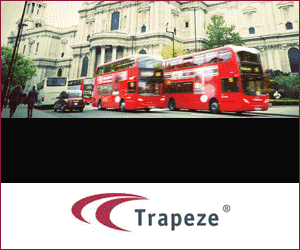
In a significant initial step to bring a transit line through L.A.’s notoriously congested Sepulveda Pass, the Los Angeles County Metropolitan Transportation Authority (Metro) today issued a Request for Proposals to study the feasibility of various transit modes and alignments.
The project is one of the highest profile projects included in Metro’s recently approved Measure M transportation sales tax measure, and would connect the San Fernando Valley and Westside region of Los Angeles with a high capacity transit line. Approximately $1 billion in funding is available through Metro’s 2008 Measure R transportation sales tax. Another $6.8 billion for transit and freeway corridor improvements is identified through the Measure M transportation sales tax and other funding sources. That is a combined investment of nearly $7.8 billion by Metro on these projects.
With the RFP, Metro is seeking a consultant to identify and evaluate a range of high-capacity transit concepts that could serve the 11-mile north/south travel corridor connecting the Metro Orange Line in the San Fernando Valley with the future extension of the Metro Purple Line at Westwood or VA Hospital station and Metro Expo Line on the Westside. A number of alignments and terminal station locations will be considered.
“The Sepulveda Pass remains one of the most intractable choke points in the entire L.A. region, impacting hundreds of thousands of motorists on a daily basis,” said John Fasana, Metro Board Member and Mayor Pro-Tem for the city of Duarte. “That’s why we are laser-focused on finding a transit solution that will finally give Angelenos a choice to avoid this freeway’s rush-hour gridlock.”
Transit modes that will be evaluated include Bus Rapid Transit, light rail, subway and other proven transit technologies not currently operated by Metro. The study is expected to take approximately 14 months to complete.
“Metro is wasting no time fulfilling the will of voters with L.A. County’s ambitious and far-reaching traffic improvement plan,” said Phillip A. Washington, Metro’s CEO. “We are attacking I-405 congestion on a number of fronts. Our plan includes transit and freeway solutions that will benefit not just San Fernando Valley and Westside commuters, but everyone who travels within our region.”
The Sepulveda Pass Transit Corridor Project has an ultimate delivery date of 2033. Metro is seeking ways to expedite project delivery. Through Metro’s Office of Extraordinary Innovation, the agency has received two unsolicited proposals for Public Private Partnerships to accelerate the project. The feasibility study will help with the review of these industry proposals.
Metro’s study will also coordinate with the ongoing ExpressLanes study now being conducted by the agency’s Congestion Reduction Department. This project — also with funding from Measure M — would build toll lanes on the 405 between the 101 and 10 freeways.
In November 2012, Metro completed a ‘systems planning’ study that defined broad concepts and financial strategies for possible transit options for a 30-mile corridor area between Sylmar and Los Angeles International Airport. That study ultimately found there is a strong potential for transit improvements specifically in the Sepulveda Pass Corridor between the Metro Orange Line and the Metro Expo Line. Between 60 and 80 percent of daily transit boardings for the full 30-mile corridor were forecasted to occur at stations within this middle segment.
The I-405 Freeway is ranked as one of the most traveled urban highways in the nation. It accommodates approximately 300,000 vehicles per day. According to the Federal Highway Administration, that number is expected to grow by nearly 50 percent to 447,000 by 2025.
About The LA Metro.jpg)
The Los Angeles County Metropolitan Transportation Authority (Metro) is unique among the nation’s transportation agencies. Created in 1993, Metro is a multimodal transportation agency that transports about 1.3 million passengers daily on a fleet of 2,200 clean air buses and six rail lines. The agency also oversees bus, rail, highway and other mobility-related building projects and leads transportation planning and programming for Los Angeles County.




Comments
There are no comments yet for this item
Join the discussion